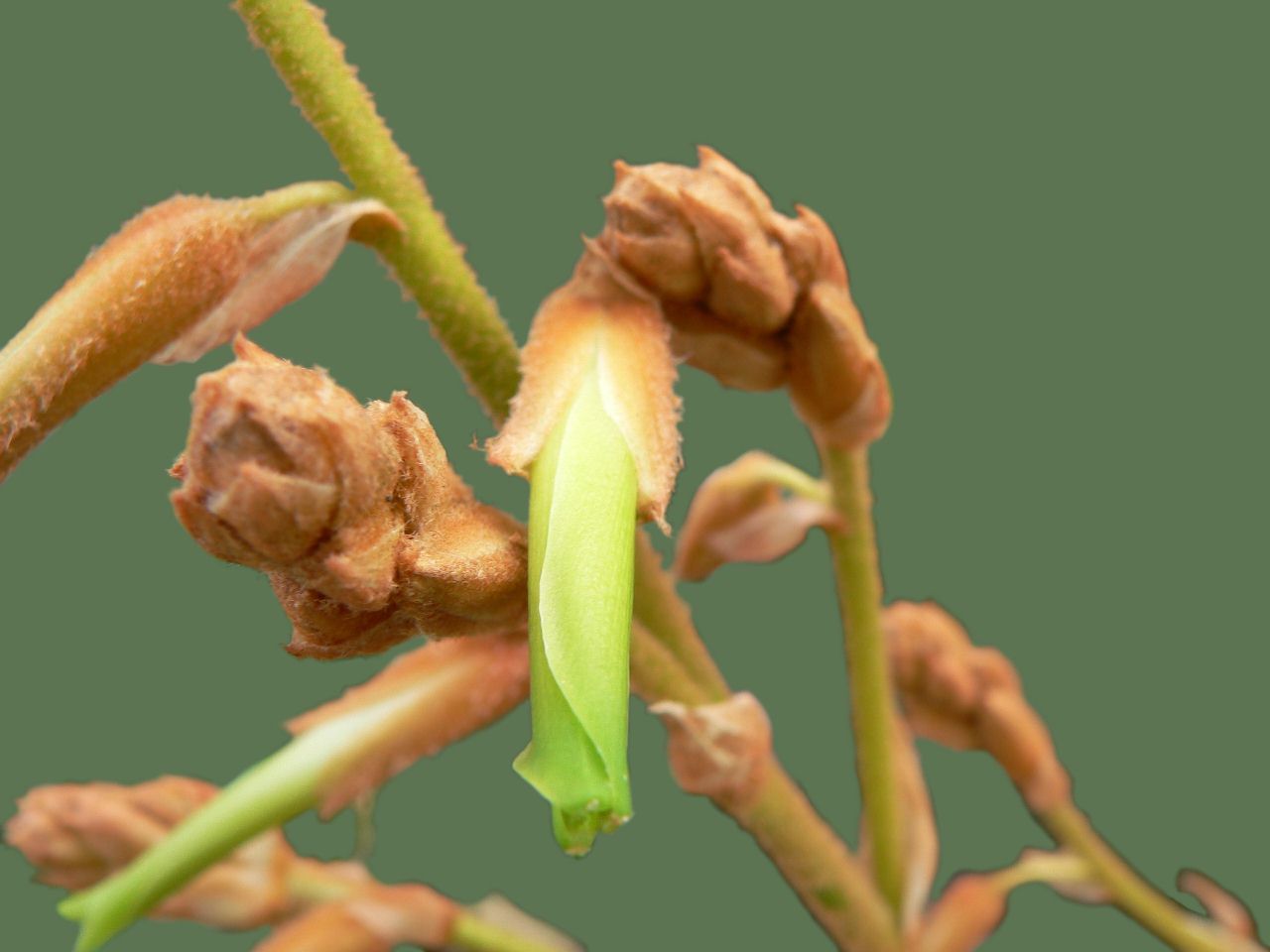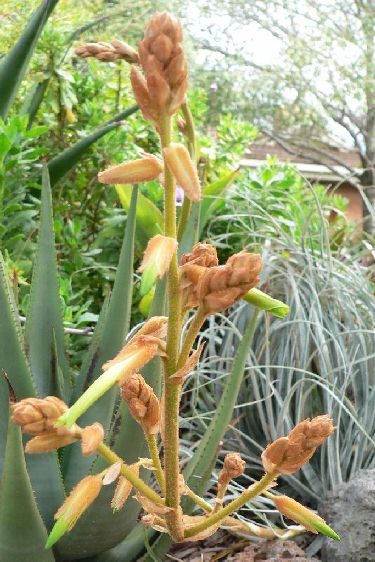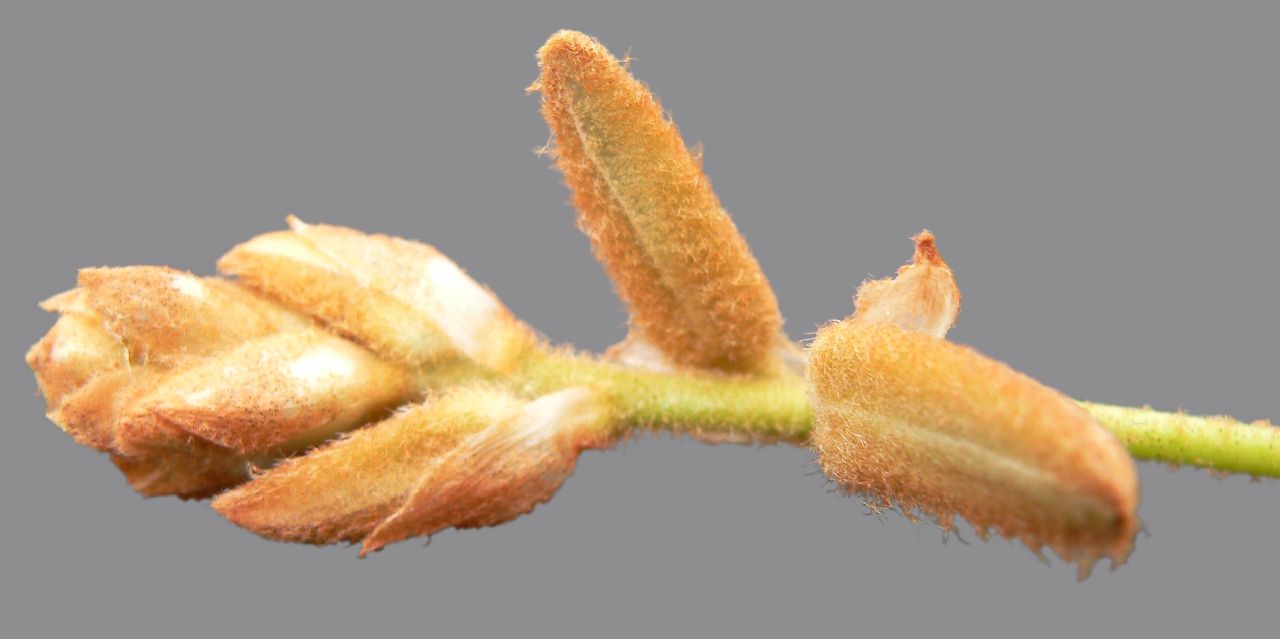Puya Moray
Click thumbnails for full size, scaled to a new window.
Puya Moray
Puya ferruginea species - provisionally.



| Andrew Raff (at Gary's 18 march 2012). |
Puya ‘Moray’ by Derek Butcher and Andrew Raff. Feb 2013
This saga started in 2005 when Andrew collected seed from a prickly plant while exploring the Inca ruins at Moray which is about 50 km northwest of Cuzco in Peru. To be more exact, the plant was situated on the west bank, next to the pathway leading down to the main circular Inca cultivation area. The seed made it back to Australia where it was duly planted and the plants grew and grew. Some were handed out to others and if you were one of the lucky recipients please take note of our somewhat intricate findings.
Yes, the plant flowered and that is where the problem started. Andrew put the photos on the Internet on Florapix hoping for some identification and got more than he bargained for. Dr Walter Till said it was Pitcairnia herrerae which is good BUT that species had been treated by Lyman Smith as a synonym of Puya ferruginea. We must remember that Puya and Pitcairnia are closely related and when Pitcairnia herrerae was described in 1929 by Harms, Puya ferruginea was known as a Pitcairnia. It was only in 1968 that Lyman Smith treated Pitcairnia ferruginea as Puya ferruginea! To add to the confusion, a completely different plant was described by Harms, also in 1929, as Puya herrerae! A good trait for identifying Puya ferruginea according to Harry Luther is its star-like trichomes and many of the plants growing in Australia have been named using this idea. The inflorescence was covered by a brownish wool which Andrew was able to confirm were really star-like trichomes. So we were halfway there. Walter then suggested we deal with the problem as a good botanist would, but neither of us have Botanical training and are cagey, preferring to give the plant a Cultivar name, present the facts and let some trained Botanist look at the problem at a later date! Was it a Puya ferruginea in the broad sense or a Pitcairnia herrerae in the narrow sense?
Our decision is all the more vindicated when you see what action was not taken in neighbouring Ecuador with a similar problem:
Detail from Manzanares in Jewels of the jungle of Ecuador – Pitcairnioideae, 2005 p318-9
OBSERVATIONS. Two populations have been found in Ecuador. The first was found near Guaranda, province of Bolivar, in the montane forest region. Andre named it P. echinotricha, currently a synonym of P. ferruginea. It is a polycarpic species that forms dense colonies with branched trunks. The petals do not have calluses. The second population grows on the flat plateaus of the Cordillera de Huaracayos, province of Morona Santiago, in the region of Amazonia, occurring among herbaceous or shrub vegetation. The plants of P. ferruginea that grow in the Cordillera de Huaracayos are monocarpic, with stems growing up to 150 cm long, without branches. At flowering, the inflorescence is seen emerging among the shrub vegetation and can reach a height of 6-7 m. The petals possess two long calluses at the base.
Smith (1974) united all the Puya species with ferruginous indument under this species, as synonyms. I personally believe that this requires a revision of all the type collections of the taxa as synonyms. This would permit the correct separation of species, such as the two populations of P. ferruginea growing in Ecuador, with clearly different morphology and habitats. Sadly, to this date, I have not been able to gather the material necessary that would permit me to make the separation of the two populations registered in Ecuador.
The ferruginous indument of both populations causes irritation and itching of the skin. Before anthesis the flowers are erect; they hang at anthesis, turning back to remain parallel to the axis.
The population of P. ferruginea growing near Guaranda, does not produce a new generation of plants from seeds, it occurs in areas where the agriculture frontier is constantly increasing and seeds do not germinate; it grows only by means of offsets. P. ferruginea is almost always found in dense colonies as living fences.
The population of P. ferruginea growing in the Cordillera de Huaracayos produces a multitude of new plants from seed. Examples are found of newly germinating plants up to mature plants at the point of flowering. Most are found on the edge of the plateau, growing in abundant Sphagnum with high humidity. At first glance, the dense populations of P. ferruginea seem similar to the genus Greigia.
Until the two populations are separated into two different species, this Puya will be the only one that inhabits both the montane region and Amazonia.
Our plant is not huge as far as Puya goes. It is about 25 – 30 cm in diameter and flowers to 60cm high.
Andrew has confirmed that his plant has star-like trichomes which places this plant in the Puya ferruginea complex. While this will be registered as Puya ‘Moray’ you can write your label as Puya ferruginea ‘Moray’.
Updated 24/03/13


